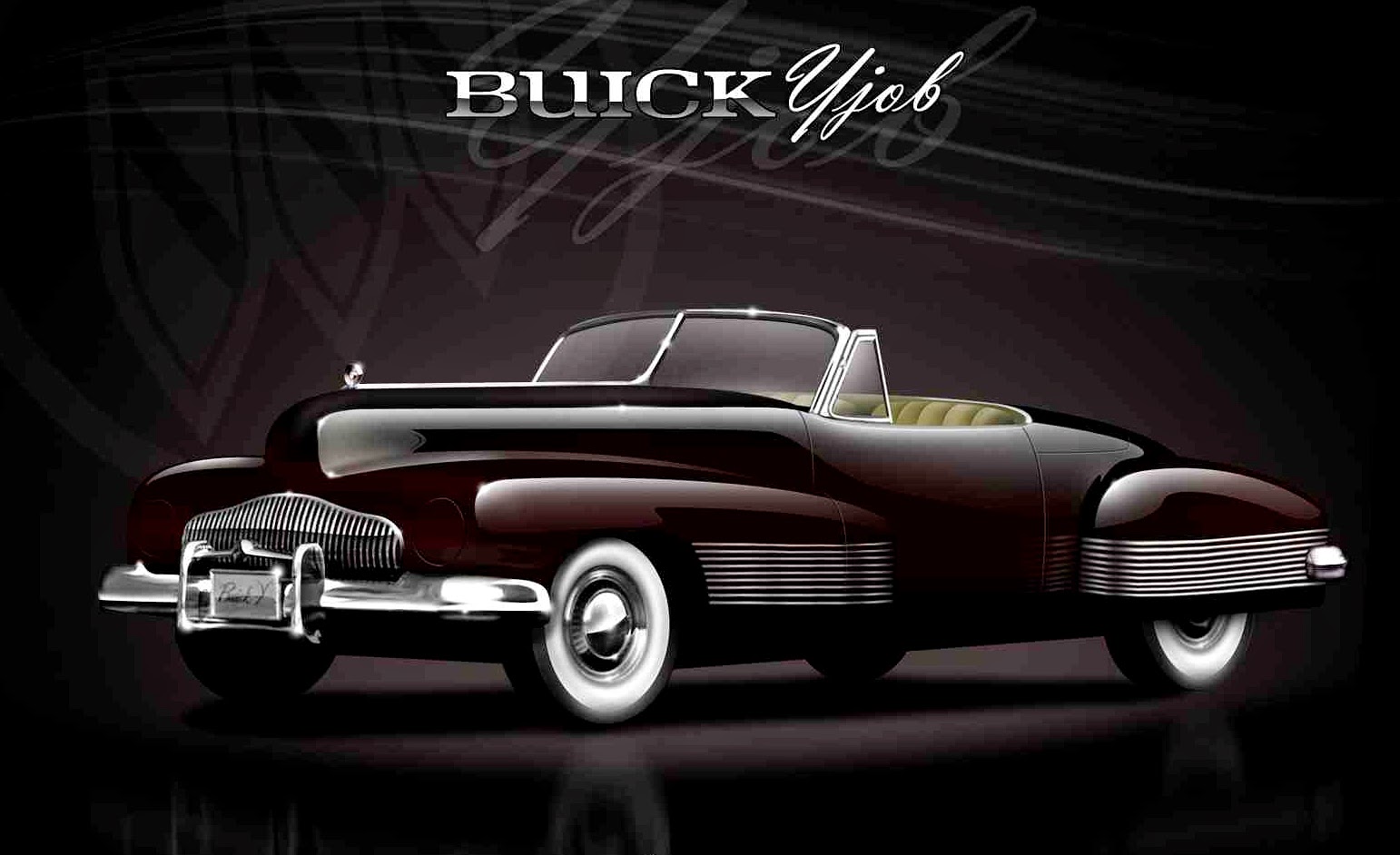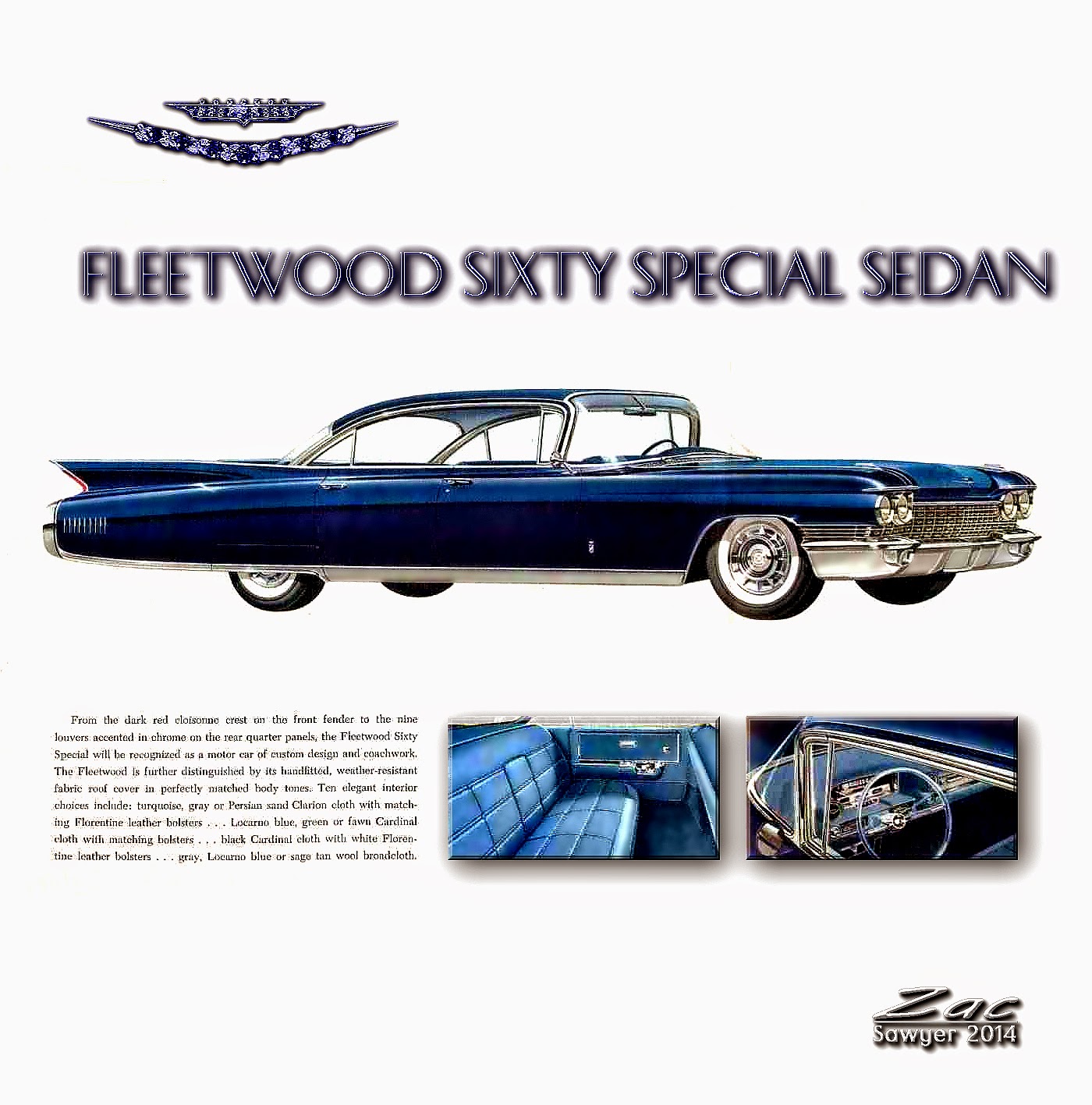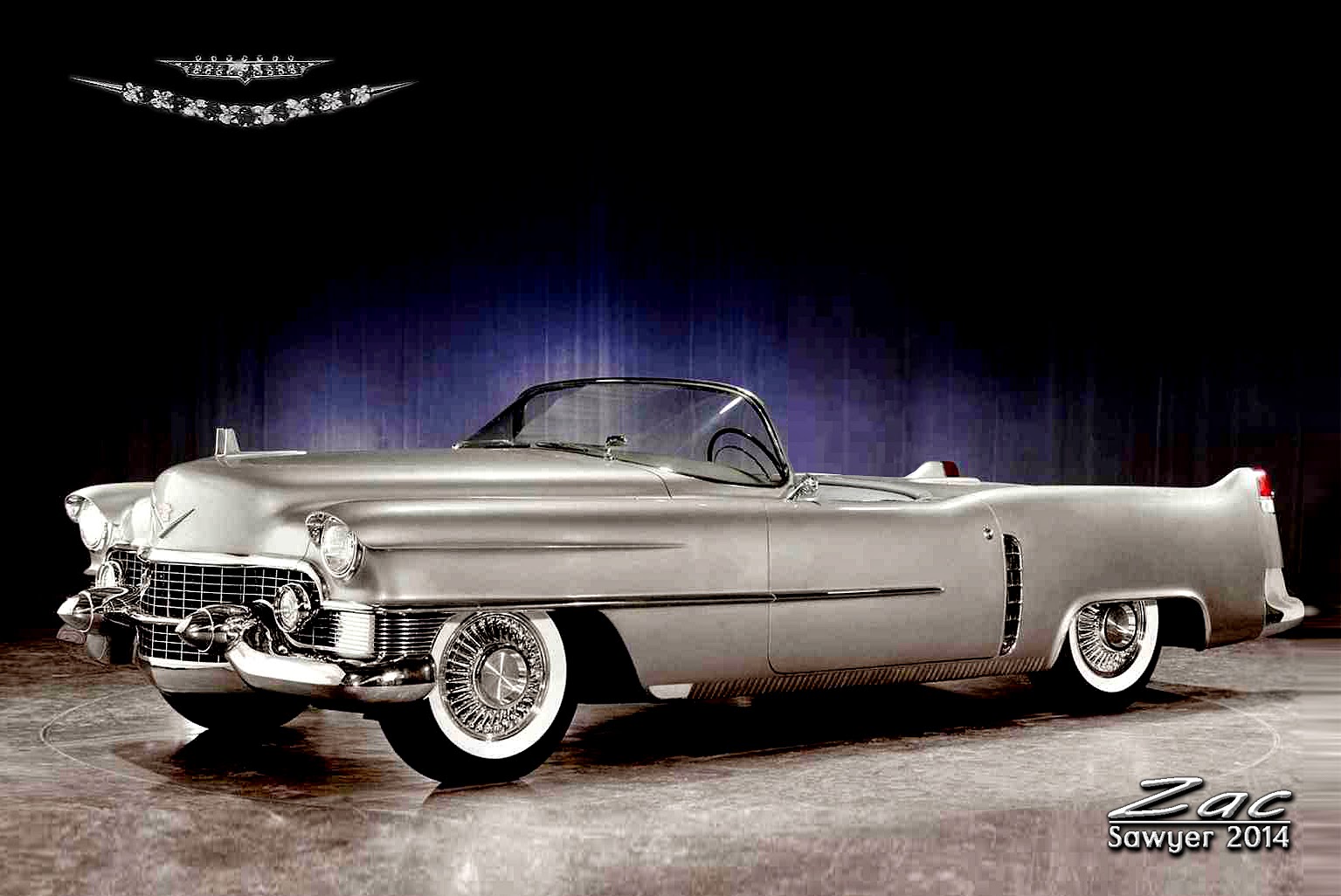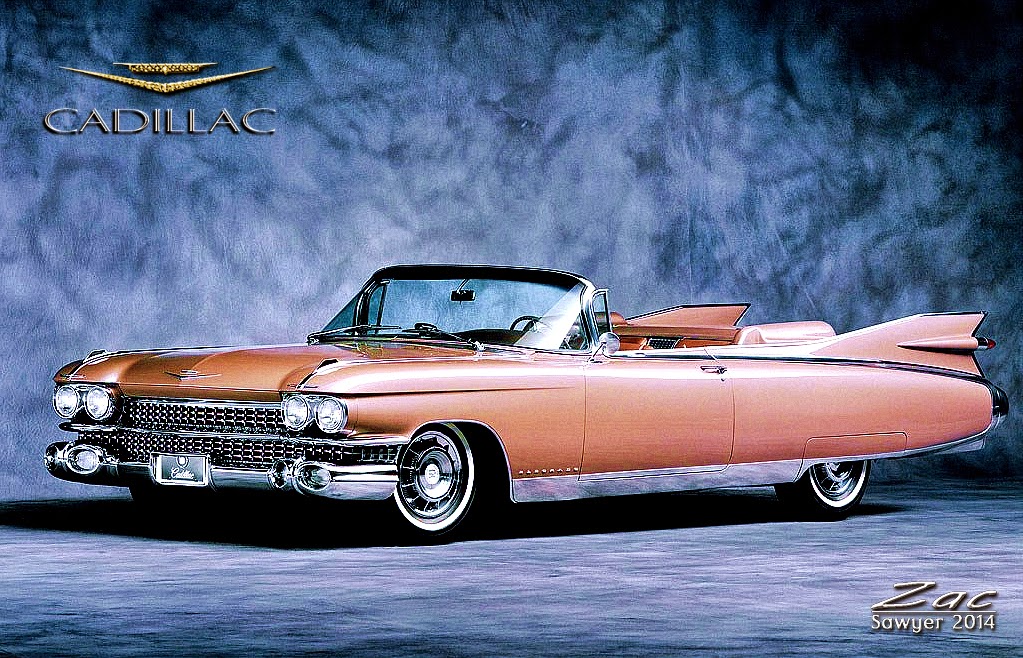HARLEY J EARL
 |
| © Copyright Zac Sawyer 2014 |
Harley J. Earl (November 22, 1893 – April 10, 1969) was the initial designated head of Design at General Motors, later becoming Vice President, the first top executive ever appointed in Design of a major corporation in American history.
He was an industrial designer and a pioneer of modern transportation design.
A coach-builder by trade, Earl pioneered the use of free-form sketching and hand sculpted clay models as automotive design techniques.
He subsequently introduced the "concept car" as both a tool for the design process and a clever marketing device.
Earl's Buick Y-Job was the first concept car. (see below)
He started "Project Opel", which eventually became the Chevrolet Corvette, and he authorized the introduction of the tail-fin to automotive styling.
During World War II, he was an active contributor to the Allies' research and development program in advancing the effectiveness of camouflage.
Early Life
Harley Earl was born in Hollywood, California.
His father, J. W. Earl, began work as a coach-builder in 1889.
The senior Earl eventually changed his practice from horse-drawn vehicles to custom bodies, and customized parts and accessories for auto-mobiles, founding Earl Auto-mobile Works in 1908.
Earl began studies at Stanford University, but left prematurely to work with, and learn from, his father at Earl Automotive Works.
By this time, the shop was building custom bodies for Hollywood movie stars, including Roscoe "Fatty" Arbuckle and Tom Mix.
General Motors
Earl Automotive Works was bought by Cadillac dealer Don Lee, who kept Harley Earl as director of its custom body shop.
Lawrence P. Fisher, general manager of the Cadillac division, was visiting Cadillac dealers and distributors around the country, including Lee.
Fisher met Earl at Lee's dealership and observed him at work.
Fisher, whose automotive career began with coach-builder 'Fisher Body', was impressed with Earl's designs and methods, including the use of modelling clay to develop the forms of his designs.
Fisher commissioned Earl to design the 1927 'La Salle' for Cadillac's companion marque.
The success of the 'La Salle' convinced General Motors president Alfred P. Sloan to create the 'Art and Color Section' of General Motors, and to name Earl as its first director.
Prior to the establishment of the 'Art and Color Section', American auto-mobile manufacturers did not assign any great importance to the appearance of auto-mobile bodies.
Volume manufacturers built bodies designed by engineers, guided only by functionality and cost.
Many luxury-car manufacturers, including GM, did not make bodies at all, opting instead to ship chassis assemblies to a coach-builder of the buyer's choice.
The executives at General Motors at the time, including engineers, division heads, and sales executives, viewed Earl's conceptual ideas as flamboyant and unfounded.
Earl struggled to legitimize his design approach against the tradition - and production -oriented executives.
As head of the newly formed 'Art and Color Section' in 1927, he was initially referred to as one of the "pretty picture boys", and his Design Studio as being the "Beauty Parlor".
In 1937, the 'Art and Color Section' was renamed the 'Styling Section'.
Sloan eventually promoted Earl all the way to the vice president level, making him (to Sloan's knowledge) the first styling person to be a VP at a large corporation.
Harley Earl and Alfred P. Sloan implemented "Dynamic Obsolescence" (essentially synonymous with planned obsolescence), and the "Annual Model Change" (tying model identity to a specific year), to further position design as an engine for the company's product success.
These ideas are largely taken for granted today but were unusual at the time.
Harley Earl and the Buick Y-Job
In 1939, the Styling Division, under Earl's instruction, styled and built the Buick Y-Job, the motor industry's first concept car.
While many one-off custom auto-mobiles had been made before, the Y-job was the first car built by a mass manufacturer for the sole purpose of determining the public's reaction to new design ideas.
After being shown to the public, the Y-job became Earl's daily driver.
Tailfins
 |
| Lockheed P-38 Lightning |
Harley Earl authorized the Frank Hershey design for the 1948 Cadillac, which incorporated the first automotive tailfin.
Frank Hershey (1907 – 1997) was an American automobile designer and student of General Motors Vice President of Design Harley Earl. Hershey is best known for his 1932 Peerless V-16 prototype, 1949 Cadillac tailfins and the 1955 Ford Thunderbird.
Born Franklin Quick Hershey in Michigan, and raised in Beverly Hills and La Puente, California, Hershey began his career at Murphy Coach Works of Pasadena, California under the guidance of Frank Spring. While at Murphy, Hershey was assigned the task of designing the 1932 Peerless X-D V-16 prototype.
From Murphy, Hershey went to work for GM where he focused on the 1933 Pontiac; in designing the 1935 Pontiac, Hershey introduced the silver streak design theme that the make would continue until 1956. He also was assigned to GM's Opel design offices in Germany in 1936, and GM's Holden make in Australia.
After leaving GM, Hershey set up his own design firm. Harley Earl attempted to lure Hershey back to GM; Hershey chose not to return only to learn years later that had he returned he would have been Earl's first choice to replace him as GM's Vice President of Design.
After several years with Packard, Hershey went to Ford where he designed the 1953-1957 full sized Fords. According to an interview given by Hershey to James W. Howell in 1995, George Walker had been hired as the public face of Ford design. Hershey designed the landmark Ford Thunderbird, and admitted so in a 1954 interview, which created friction between Walker and Hershey.
After leaving Ford, Hershey also worked for Kaiser Aluminum and Rite Autotronics, heading design effort in both companies.
Hershey attended Occidental College where he majored in forestry. Hershey served in the Navy during World War II. While married and the father of two children, Frank Hershey was openly gay.
Frank Hershey died in California on October 20, 1997.
Inspiration for the fins came from the Lockheed P-38 Lightning.
 |
| Virgil Exner |
But it extended beyond the war, during the age when space rockets captured the popular imagination (1950s and 1960s).
The style caught on throughout Detroit and eventually led to competition between Harley Earl and Virgil Exner over the size and complexity of tail-fins, culminating with those on the 1959 Cadillac models.
Chevrolet Corvette
Influenced by the English and European sports cars being raced on road racing circuits after World War II, Earl decided that General Motors needed to make a sports car.
Design work on "Project Opel" began as a secret project.
He first offered the project to Chevrolet general manager Ed Cole.
Cole accepted the project without hesitation, and the car was offered to the public in 1953 as the Chevrolet Corvette.
Succession
Harley Earl retired from General Motors in 1958 after overseeing the design of the 1959 models.
He was succeeded as vice-president with responsibility for the Design and Styling Department by Bill Mitchell, under whose leadership GM design became less ornamental.
Before Earl retired, General Motors became the largest corporation in the world, and design was acknowledged as the leading sales factor within the automotive industry.
Death and Legacy
Harley Earl suffered a stroke and died in West Palm Beach, Florida, on April 10, 1969.
He was 75 years old.
He is remembered as the first styling chief in the US automobile industry, the originator of clay modelling of auto-otive designs, the wraparound wind-shield, the hardtop sedan, factory 'two-tone' paint, and tail-fins.
He said in 1954, "My primary purpose for twenty-eight years has been to lengthen and lower the American auto-mobile, at times in reality and always at least in appearance."
The extremely low and long American cars of the 1960s and 1970s show the extent to which Earl influenced an entire industry and culture.




































































